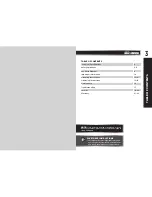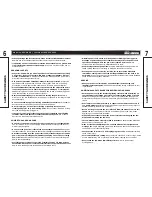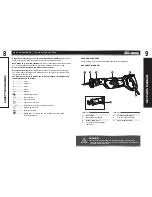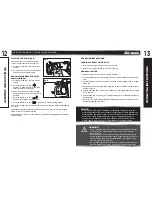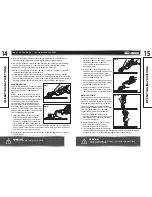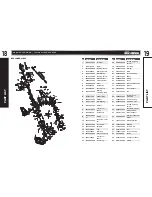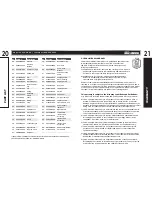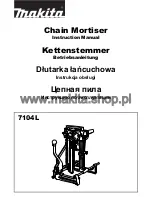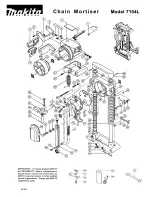
15
14
model no. 054-8146-8 | contact us 1.800.689.9928
8. Depress the trigger switch to start the saw and bring it to the maximum
desired cutting speed before applying the blade to the workpiece.
9. Do not force the tool. Place the shoe firmly on the workpiece while cutting.
Use only enough steady pressure on the blade to keep the saw cutting.
10. Reduce pressure as the blade comes to the end of the cut.
11. Release the trigger switch. Allow the saw to come to a complete stop before
removing the blade from the workpiece.
12. If sawing fiberglass, plaster, wallboard, or spackling compound, clean the
motor vents frequently with a vacuum or compressed air. Always wear safety
goggles when cleaning tools using compressed air. These materials are highly
abrasive and may accelerate the wear on motor bearings and brushes.
PLUNge CUTTINg
Your reciprocating saw is ideal for plunge
cutting directly into surfaces that cannot
be cut from an edge, such as walls or
floors.
Plunge cutting may be done two ways,
depending on how the blade is inserted.
In thick materials and in harder materials,
such as metal, plunge cutting should
not be attempted. Such materials can
be cut with the reciprocating saw only
by starting the cut from the edge of the
material or from a hole drilled all the way
through the material that is large enough
to accommodate the saw blade.
1. Insert the blade into the tool. If the
blade was inserted with the teeth
facing down toward the lower surface
of the tool, hold the tool as shown in
fig 7, resting the edge of the shoe on
the workpiece. If the blade was inserted with the teeth facing up toward the
upper surface of the tool, hold the tool as shown in fig 8, resting the edge of
the shoe on the workpiece as shown.
2. Raise the blade so that it is just above the workpiece and does not contact
the workpiece.
3. With the blade just above the
workpiece, depress the trigger switch.
Then using the edge of the shoe
as a pivot, lower the blade into the
workpiece (fig 9).
4. As the blade starts cutting, raise the
handle of the tool slowly until the shoe
rest firmly on the workpiece. Then
guide the tool along your cutting line
to acquire the desired cut.
5. After the blade has penetrated through
the workpiece, continue sawing along
the marked cutting line (fig 10).
6. Release the trigger switch. Allow the
saw to come to a complete stop before
removing the blade from the workpiece.
MeTAL CUTTINg
The saw can be used to cut metals, such
as sheet steel, pipe, steel rods, aluminium,
brass, and copper. Be careful not to twist or
bend the saw blade. Do not force the tool.
The use of cutting oil is recommended
when cutting soft metals and steel. Cutting
oil will keep the blade cool, increase
cutting action, and prolong blade life.
1. Securely clamp the workpiece in
position, and make the cut close to the
clamping point to minimize vibration
of the work being cut.
2. When cutting conduit pipe or angle
iron, clamp the work in a vise, if
possible, and cut close to the vise.
3. To cut thin sheet material, “sandwich”
the material between pieces of hardboard or plywood, and clamp the layers
together in order to reduce vibration and tearing of the material.
O
P
e
R
A
TIN
g
INS
TRUCTIONS
O
P
e
R
A
TIN
g
INS
TRUCTIONS
wARNINg!
•
Risk of injury, don’t plunge cut in metal.
FPO
fig 8
fig 7
fig 9
fig 10
wARNINg!
•
Never use gasoline as a cutting oil, because normal sparking
could ignite the fumes.
FPO


